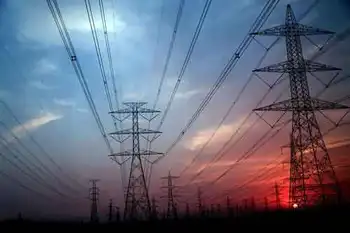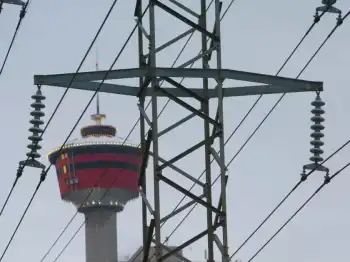Knock on wood: biomass power is coming
ONTARIO - An important part of the province's coal phase-out strategy rests on Ontario Power Generation's ability to run its existing coal plants on biomass fuel, such as wood pellets produced from forest residue and small, quick-growing trees.
This biomass option is often forgotten, overshadowed by the aggressive deployment of wind and solar farms and natural gas facilities. But it's attractive for a number of reasons, most obvious being the potential to reduce greenhouse gas emissions.
The calculation of that potential was part of a University of Toronto-led study published recently in the journal Environmental Science & Technology and commissioned by OPG. Based on a full "cradle-to-grave" analysis that took into account resource extraction, transportation, processing and final fuel combustion, the study found that using 100 per cent wood pellets instead of coal reduces greenhouse gas emissions by 92 per cent.
Even compared to an efficient combined-cycle natural gas plant, burning wood pellets emits 78 per cent fewer emissions. "So one wouldn't want to become reliant on the natural gas option," study co-author Heather MacLean, a professor of environmental engineering at U of T, said in an interview.
Now, the study makes one major assumption here, which is that "the CO2 resulting from the combustion of the bio-based resource is exactly balanced by the carbon incorporated during re-growth of the forest during the time period considered."
In other words, we have to expect that the woody material is harvested from Ontario forests in a sustainable way, and that new trees sprouting up will vacuum the carbon released from older trees that were burned as fuel. This will require strict government regulation that – and I know this concept is somewhat novel – is actually enforced.
Same goes for the use of biomass pellets made from switchgrass, leftover corncobs and other agricultural residues, which OPG is thinking of mixing into its wood pellet fuel. MacLean says these biomass sources be the focus of her next study.
So when will the first coal-to-biomass switchover take effect? OPG is making some solid progress. Its 230-megawatt Atikokan plant is on target to start burning 100 per cent wood pellets in 2012, and the first of what's expected to be three or four units at Nanticoke could follow a year later. Studies continue for the Lambton and Thunder Bay plants.
The plan has received much support – from industry and environmental groups alike – because it allows the province to continue using a paid-for asset (the coal plant) in a way that uses a carbon-neutral fuel, which also dramatically reduces sulphur dioxide, nitrogen oxides and particulate emissions.
"We would anticipate the retrofitted plants would still have 10 years of solid service easily available to them," said Chris Young, OPG's vice-president of fossil products. "This can be a step," he added, "on the path toward purpose-built biomass in Ontario, new assets likely deployed on a more decentralized basis."
The job-creation and grid-management aspects are also worth touting.
The supply chain required to feed the beast, so to speak, could potentially create hundreds, even thousands of jobs in regions of Ontario most desperate for them, including many aboriginal communities. People will be needed to harvest the biomass, transport it, and convert it into fuel pellets.
Moving to biomass will also preserve some jobs at coal plants that are kept in full or partial operation. This excludes the engineering work created during retrofitting of the power plants. These are jobs that simply wouldn't exist in Ontario if we kept burning coal, since supply of that fossil fuel comes from outside the province, including western Canada and West Virginia.
As for grid management, the new retrofitted plants are going to be "peakers" that, like some natural gas plants, can help manage the output from renewables like wind and solar. They will help fill the power gap when the wind blows less – that is, they can ramp up - and can reduce their output when it's a sunny and windy day.
"We believe these plants will be able to do what they do today (with coal) in terms of ramping," says Chris Young, OPG's vice-president of fossil products. And every megawatt of biomass power that can do it represents a megawatt of natural gas plant that doesn't need to be built or relied on.
And what will this biomass power generation cost? The U of T study estimates about 12 cents per kilowatt-hour, roughly double the price of using natural gas based on today's unusually low price, but competitive with nuclear and other renewables such as wind. That said, the comparison excludes any impact carbon prices might have on the natural gas option.
Also, if natural gas prices return to the levels they were in the summer of 2008, the gap with biomass pretty much closes. So let's knock on wood and hope that OPG can pull this one off.
Related News

Pennsylvania residents could see electricity prices rise as much as 50 percent this winter
PITTSBURG - Energy costs for electric customers are going up by as much as 50% across Pennsylvania next week, the latest manifestation of across-the-board energy price increases impacting gasoline, heating oil, propane, and natural gas.
Eight Pennsylvania electric utilities are set to increase their energy prices on Dec. 1, reflecting the higher cost to produce electricity. Peco Energy, which serves Philadelphia and its suburbs, will boost its energy charge by 6.4% on Dec. 1, from 6.6 cents per kilowatt hour to about 7 cents per kWh. Energy charges account for about half of a residential bill.
PPL Electric Utilities, the Allentown company…




